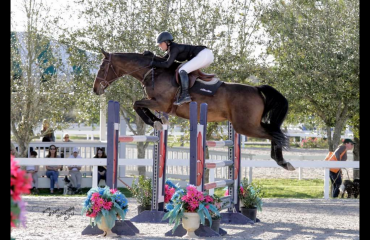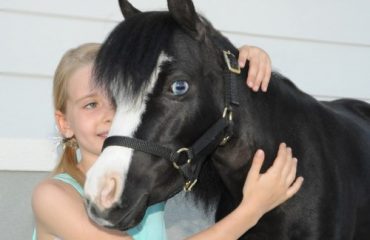
Jaime truly represents the “world” of dressage.
Photo courtesy of Myriam Ranchon
Jaime Amian truly represents the “world” of dressage. Originally from Spain, he began riding with Juan Manuel Munoz Diaz, who trained the PRE stallion Fuego, made famous for their performance at the 2010 World Equestrian Games. Jaime then went to Germany where he trained with dressage legend Klaus Balkenhol for three years and earned his Bereiter license. He also trained in France and New Zealand before settling in Wellington, Florida. Sidelines had the chance to catch up with Jaime to see how he has merged his experiences from around the globe into his own unique style.
Sidelines: What are some differences between being an equestrian in America versus European countries?
Jaime Amian: Riding in America is very different than the European horse world and competitions overseas. The riding programs in Europe focus on starting kids from the beginning with the pony divisions, then young riders. Riding is of course very popular, and is similar to the equestrian life here in Wellington, Florida. In America I notice that there are more opportunities for adult amateur riders, and that this is very popular.
Sidelines: What’s your favorite country to ride in?
JA: For competing, it’s great to ride in Europe. There are a lot of tough competition and high-level riders, and also many shows all over the region. I had great experience training and competing across Europe, and I was based out of France. That would be my favorite country in Europe because it’s centrally located, with shows south in Italy, and north in Germany and Holland. Now I ride in America because it’s a great place to build a business if you work hard and stay on track. At the same time, it’s a little bit more difficult because there aren’t as many riders as in Europe. However, I’d say America would be my favorite county; that’s why I’m here.
Sidelines: With knowledge from so many different places, what techniques do you find most effective in training young horses?
JA: I have several young 4- and 5-year-old horses, some that I own and others I ride for clients. One training technique that I developed in Europe and like to use is working in-hand with the horses when they’re younger, usually starting with this type of work when they’re 5 years old. I think that in-hand work is very important and helps make them stronger. It’s not all about the piaffe and passage, it’s more about the horse learning the rein back and accepting the half halt. The in-hand work allows the horse to learn some collection, and I think it’s really essential for training.

Jaime with his star horses Legend (left) and Rey (right).
Photo courtesy of Jaime Amian
Sidelines: What do you like about training horses and clients?
JA: I take my time with the clients and with the horses. I love to be involved in the lessons and training, but also the management, feeding, supplements and all-over care. When I go to competitions, it’s all about being with the horses and paying attention to each part of their care. This also helps us to better understand the horses. A simple thing like adjusting a bridle comfortably can make a real difference.
Another important factor is that we have a great team and really enjoy going to shows and the training experience. I teach different levels and ages of riders, and especially enjoy teaching young riders. I’ve had good experiences back in Europe with one young rider selected for the German team, and another on the Luxemburg team. Now I’m working with a talented young American rider and am really enjoying the whole experience.
I try to offer each of my riders all the help they may need, and I want to make the shows a good experience for everyone. It’s not just about going to competitions and trying to get the high scores, it’s about our team having fun and enjoying our time with the horses.
Sidelines: How do you manage your time at the barn?
JA: The days are very busy since we normally work six days a week in the stable, and with shows we don’t have a lot of extra time to do other things. I try to get all my riding done before I start teaching, and then see to other matters afterwards. I’ve also been teaching some clinics in the Wellington area and I have some planned for Australia and New Zealand soon.
Sidelines: How did you get started in dressage?
JA: My family had racehorses so I was always involved with horses since I was a kid. One day I was at this dressage show and saw these horses doing the piaffe and passage and I liked it. Then I began doing my own thing riding dressage with the Thoroughbred horses at home, and even entered some shows. I also studied to be a farrier because I wanted to have more knowledge of the horse’s body. I was interested in the conformation and build of the horse. What I learned as a farrier is very important and useful in my life as a trainer. Having this knowledge helps with understanding the horse, training and when buying horses.
Sidelines: What do you feel is the most important lesson anyone should take away from dressage?
JA: To be patient with your horse. Every horse needs some time to develop their muscles and overall strength. Horses need time to get more mature and advance farther with exercises. The longer you wait and the more time you give them, you could get more out of them. Sometimes we try to push the horses too soon, and then sometimes they say I’ve had enough or they get injured. I think the most important lesson is not to rush training, and be patient with your horse.












